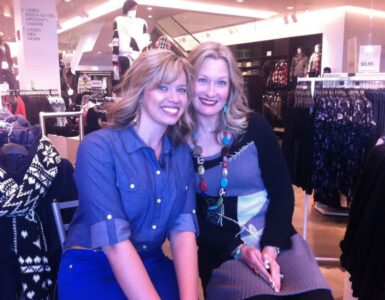Studio 5 Beauty & Style Contributor Holly Stone give the formula.
Face powder is an easy way to even out your make up. It can also act to set your make up for the day giving it a more lasting finish. Powder can conceal blemishes and even out discoloration. It can even make the skin look illuminated. With so many options, how do you select the right powder for your complexion?
There are 4 things to consider:
1. Formula: Pressed, loose, cream to powder or mineral?
The formula of powder you select should be determined based on your skin type.
Pressed powder is great for normal to combination skin. It glides over dry areas and can add oil control to others.
Loose powder is great for oily skin because it generally has oil absorbent ingredients.
Cream to powder is good for dry skin because it has some natural oils in it to keep skin moisturized.
Mineral powder is good for combination skin. Because mineral powder is not milled (sifted) as finely, it is not good for oily skin because it can create additional texture.
2. Coverage
Different types of powder yield different coverage.
• sheer coverage= translucent loose powder
• medium coverage=mineral powder
• full coverage=cream to powder and some pressed “foundation” powders
3. Color
Pressed powders and cream to powders will often times come in different base colors. The most common base colors are pink and yellow tones. Even if you have pink undertone in your skin, always opt for a yellow based powder as it will neutralize your skin tone. Pink powder tones often make the skin look flushed and are good for the cheeks only. White powders are generally used to lighten skin tone. Peach undertones almost always look orange and should be avoided.
Translucent powders while very slight in pigmenting the skin, can vary in color tones. Light, med and dark are your general options. Opt for one tone darker than your skin tone to warm up skin and add some healthy, natural looking color.
4. Effect
Luminizing Powder: Shimmer powder with gold or silver undertones. If your skin is cool in undertone, select silver. If your skin undertones are warm, select gold. Be cautious as shimmer powder can accentuate fine lines and wrinkles.
Highlighting Powder: absent of shimmer. Apply to high cheek bones, above eyebrow for an automatic face lift. Apply to bridge of nose so nose doesn’t look flat. Apply just above jaw bone for facial sculpting illusion of thinner face.
Matte Powder: minimizes shine often created by foundation. Evens out skim tone. If applied too heavily, can make skin look aged.
Set Powder: sets liquid foundations without “mattifying” the skin. Skin can still look “dewy.”
Blot Powder: acts as oil controller for oily skin. Doesn’t feel like powder is added to skin but rather that oil is taken away from skin. Often times in paper application ie rice paper.
TIPS FOR USING POWDER:
• Do not apply powder to very dry skin or infected areas of the skin
• Apply powder after foundation but before eye make up
• Clean powder brushes or sponges often
• Avoid applying powder under the eyes
Bonus Tip: Applying powder with a brush makes the application more sheer. A powder puff or sponge yield full-coverage application.
Remember: applying too many layers of powder can cause it to settle in fine lines and exaggerate them. It can also make the skin look very dry.















Add comment